PPC or Pay Per Click Advertising is one of the most effective forms of online marketing. As the name suggests, advertisers pay each time when their ad is clicked by an online user. PPC ads have the power to bring targeted and highly qualified traffic to your website, but it requires constant planning and monitoring of your campaign. The success of a PPC campaign depends on effective optimizations techniques and constant monitoring.
Sometimes, the campaigns under-perform despite putting in all the work. It gets worse when you’re unable to pinpoint what exactly went wrong. If you’re also going through a situation where your campaign’s performance is underwhelming, then it is in dire need of optimization. PPC campaign optimization opens doors of opportunities to start drawing more exposure and boosting revenue.
Here are some tips and tricks that you can employ to optimize your PPC campaign.

- Optimize quality score: Keywords drive ads on search engine network. It provides searchers with relevant results. To maintain relevancy, Google assigns the keywords a Quality Score (QS). According to Google, there are three elements that determine your QS and these are –
If these are optimized well, they provide for a better search experience to the user. And for providing a relevant user experience, Google will reward you with an improved Quality Score.
To improve your QS, you will have to work on improving all three factors.
- Improve ad relevancy by making sure your keywords and ads are correlated, building negative keywords list, making themed ad groups, checking search terms to ensure that the keywords and ad text are relevant to the search queries
- Improve Landing page experience by optimizing the loading time of your page, using attractive images and videos, making the page device compatible, making it easy to navigate, adding compelling CTAs
- Improve Click-through Rate by using proper keyword matches, increasing your bids, ensuring the relevancy between keywords and ads, making use of ad extensions, writing captivating PPC ad text
- Build negative keywords list: Making sure your ads appear for all relevant keywords is good practice, but you must take measures to ascertain that your ads do not appear for irrelevant keywords. You can use the negative keywords to prevent your ads from showing up on search engine results page for certain terms, thus saving money that otherwise would have been wasted by the irrelevant clicks. There are many upsides of using this tactic.
- It helps in driving interested customers in the right direction.
- It eases the exclusion of irrelevant traffic, thus saving you money and time.
- If you have multiple PPC campaigns going at once, you can prevent cross-contamination between campaigns and ad groups.
- It helps in the improvement of overall CTR which will have a positive effect on the quality score.
The clicks generated by your ads are more conversion-oriented as the negative keywords make the ads more targeted and focused. Use Google AdWords Search Query report to identify negative keywords. Make sure that you update and monitor your negative keyword list daily, but also double-check that your negative terms are not hindering terms that could be beneficial to your campaign.
- Consider remarketing: Searchers dock on your landing page is at different stages of the customer journey. A few may convert, the rest may not. A study has revealed that it is 6-7 times costlier to attract a new customer than it is to retain an existing one.
Remarketing is a great way to advertise your products and services to users who have already visited your website in the past. It is an effective technique to capture missed opportunities and down-sell to the bounced visitors by creating highly targeted ads. Here are some tips to can apply while remarketing your ads –
-
- Split your customer base into “buyers” and “non-buyers”; this way you can retarget them differently. For example, you can offer a discount to the non-buyers and offer an incentive to previous buyers.
- Include influencers and celebrities in your remarketing ads if you have associated with them in the past. This adds an element of trust.
- Use dynamic retargeting which involves machine learning technology. It helps PPC marketers in scaling and optimizing their marketing activities effectively.
Campaigns that employ remarketing strategies have been observed to have a higher conversion rate. This might be because they are reminding their audience about the products and services which they were already looking for.
- Use effective device targeting: With the growing use of mobile devices, ads need to be presented in a way that supports each chosen device. You can enhance your campaign by targeting users on certain devices that are performing better.
Bear these tips in mind when device targeting –
-
- Create mobile-only ads: AdWords allows you to select a “device preference” and choose certain ads as mobile-preferred. This adjusts your content and Call-to-action (CTAs) accordingly.
- Call-only ads: These appear only on mobile devices for the sole purposes of making phone calls. Clicks are charged on the cost-per-click (CPC) bid that you set in your account.
- Mobile-text: This option runs a plain text ad on mobile devices
- A/B test the PPC elements: PPC ads need constant testing and optimizing. Testing gives you an idea of what is working properly and what needs to be dropped. A/B testing is a critical part of PPC campaigns and can be used to test keywords, ad copy, landing page and much more.
There are four major elements of your ad to test. These are-
-
- Headline
- Body
- Link
- Keywords
Throughout your test, you can characterize how certain keywords are more effective relating to conversions, CTR, etc.
The PPC space is ever-evolving and regular use of A/B testing can help in identifying which keywords are performing better and which bit of ad copy is bringing in the conversion.
- Put in Ad extensions: Extensions are additional information that expands your ad by highlighting the benefits and features of your products and services. Ad extensions improve visibility, thus boosting CTR and increasing ROI. There are several ad extensions in Google AdWords that your PPC campaign can benefit from; you just need to choose the right type.
- Sitelink extensions – They provide additional links in the ads that take the visitor to conversion-oriented pages apart from landing pages.
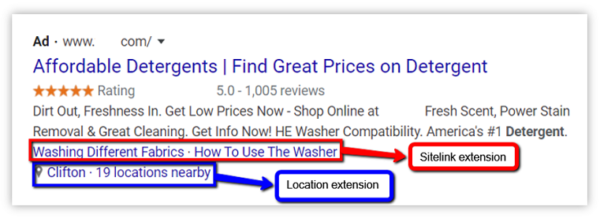
-
- Callout extensions – It helps you to promote unique aspects of your products/services by letting you add more texts to the ad.
- Location extensions – It allows you to add your physical address making it easier for local customers to reach you.
- Review extensions – They allow you to showcase reviews of the third party on your ads.
- Call extensions – They display your business phone number on the ad, making it easier for customers to get in touch.
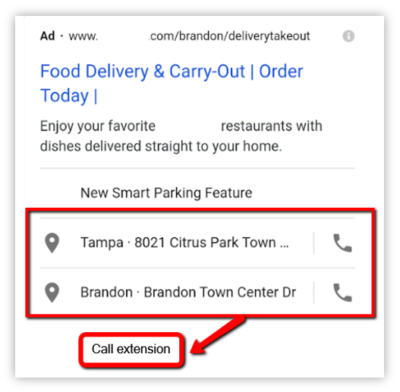
-
- Structured snippet extensions – They highlight specific features of your products/services making for an easy preview.
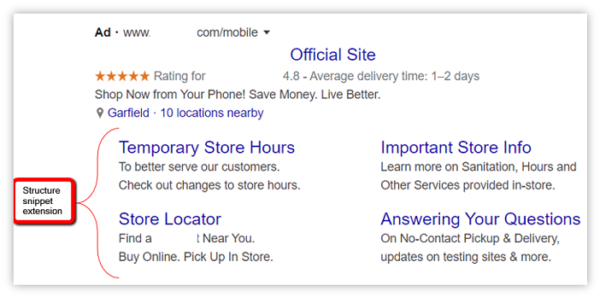
-
- App extensions – They allow you to add a download link of your app directly on the ad.
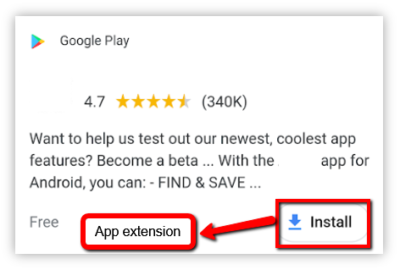
- Choose the right bid strategy: Before you begin the process of optimization, make sure that you fully understand the business, products/ services, and the target audience. This will help you in choosing a bid strategy wisely, as that is what lays the entire groundwork for a PPC campaign. You can’t build on a strategy without defining the goals. Do you want people to take action on your platform? Do you want to boost brand awareness? Is your goal to increase traffic?
There are a number of bidding strategies provided by Google AdWords that you can accommodate in your campaign.
Conversion based strategies –
-
- Target cost per action (CPA): This type of bidding focuses on trying to convert users at a set acquisition cost.
- Target return on ad spend (ROAS): This strategy is meant to be created around a certain ROAS to optimize conversion value.
- Maximize conversion: This strategy helps you gain the most conversion for your money by using the maximum daily budget that you set.
- Enhanced cost per click (ECPC): This is a Smart Bidding strategy that automatically adjusts your bids to maximize conversions. You can also use this feature with manual CPC bidding.
Impression based strategies –
-
- Target Search Page Location: This strategy automatically adjusts your bids to give your ads a better chance to appear at the top of the page or on the first page of SERPs.
- Target Outranking Share: Another automated strategy, this one lets you choose a domain that you want to outrank.
- Cost Per Thousand Impressions (CPM): This type of bidding is solely based on the number of impressions that you receive on your Display Network. It is not for use on the Search Network.
- Cost Per Thousand Viewable Impressions (vCPM): It is a manual bidding strategy designed not to generate clicks or traffic, but for increasing brand awareness. You can set the maximum amount you will pay for each 1,000 viewable ad impressions. Again, it is reserved for Display Network.
Click based strategies –
-
- Maximize Clicks: It is an automatic bidding strategy that requires you to set an average daily budget, and the Google Ads system manages your bids to drive the most clicks possible with your daily budget.
- Manual CPC Bidding: This type of bidding gives you control over your strategy. It lets you set a bid for each ad group in your campaign or a few specific keywords, thus you can make changes as and when required.
Views or Interaction based strategy –
-
- Cost Per View (CPV): This is strictly meant for video ads. In CPV bidding, you set the maximum price you want to pay for each view or any other form of interaction on your video. If someone watches 30 seconds of your ad, then it is counted a view.
- Filter out under-performing keywords: There are always keywords that under-perform. It’s best practice to fix or pause these keywords as they hurt the performance of the entire campaign while also wasting the advertising spend. So how do you determine the poor performance of a keyword? Before you begin to filter out the under-performing keywords, make sure they have been active long enough to acquire relevant data. There are different types of non-performing keywords which are discussed below –
- Keywords with no impression – If a keyword isn’t generating impressions, then it is not being searched for and is just wasting your budget. You can monitor its performance over a week and then pause or delete it if it doesn’t show improvement.
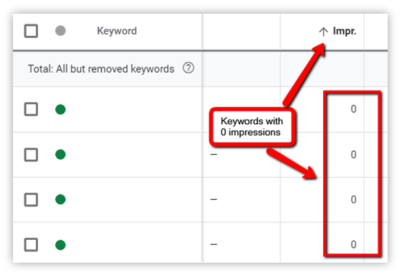
-
- Keywords with impression but no clicks – If a keyword has enough impression but a few or no clicks, then it means that your ad is not relevant to the user’s search term. Make sure that your ads are correctly targeted to the keyword so that when a user searches for you, you show them an ad that correlates with their search query. If it still doesn’t show improvement, then make sure to pause it may hurt your CTR or QS.
- Keywords with clicks but no conversion – If you are getting enough clicks but no conversion, then it means that your campaign is not being managed properly or your landing page necessary elements to make conversions. To identify the issue, you can check the Search Query Report in Google AdWords to find if you’re getting qualified leads. You can also critically analyze your website to check why you’re not getting conversions.
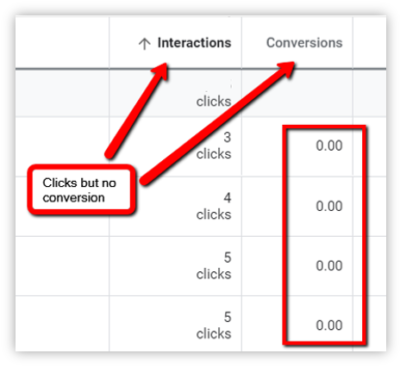
-
- Keywords with low search volume – If a keyword isn’t getting much traffic despite having a decent bid, the keyword may be too long-tailed or simply a term that is not being searched. You can pause these keywords to declutter your account.
There may be other reasons why a keyword is not performing well. Perhaps the keyword lacks relevance or the match type isn’t appropriate or maybe its bid isn’t high enough. You can easily filter out and pause or delete the keywords that are not performing in your campaign’s favor.
- Create compelling ad copies: It is said that the first impression is the most important, so it important that you make your ad copy compelling as your ad copy is the first point-of-contact between you and your potential customers. Here are a few tried and tested tips to help you create compelling ads copies–
- Determine who you’re selling to and have complete knowledge of your target audience as it is the base of all strategies.
- Target long-tail keywords as they make up a large chunk of all Google searches.
- Add a powerful emotional trigger, as people don’t make decisions on logic alone. The strong emotion is often met with a reaction, click in this case, or perhaps a conversion.
- Implement the fear of missing out or FOMO. People are motivated by the idea of missing out, which can be a catalyst to get people to click on your ads.
- Write creative CTAs and convince the users to complete the desired action.
Wrap up
There is always room for improvement in PPC campaigns through frequent and consistent optimizations. It is a constant work in progress that involves many trials and errors to get it right. The beauty of PPC marketing is that you can see every part of your campaign and optimize the under-performing elements to enhance or boost their performance. Add the above amazing tips to your strategy and enhance your PPC campaign.
References:
-
306, 2024Understanding Google’s preference for crawling high-quality content
Crawling websites is [...]
-
2905, 2024All you should know about third-party cookies by Google
Cookies have revolutionized [...]
-
2405, 2024Helpful content update by Google to enhance website ranking
Google launched a [...]


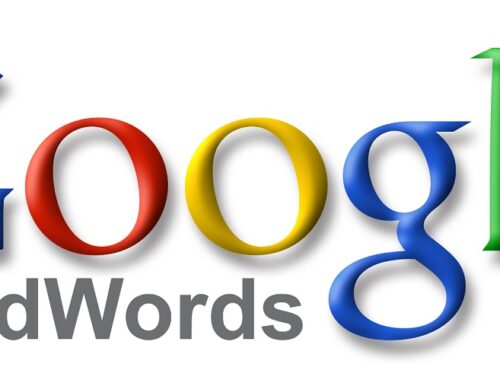

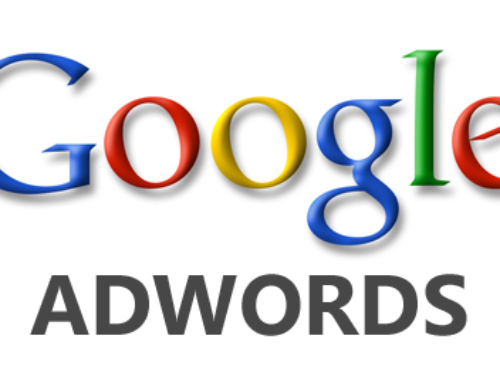
Leave A Comment